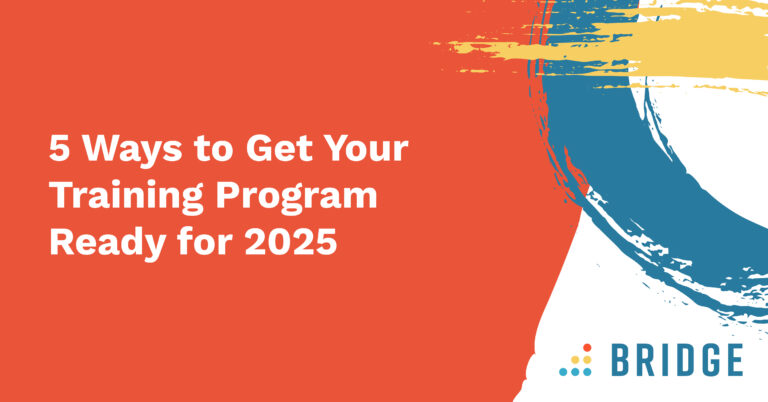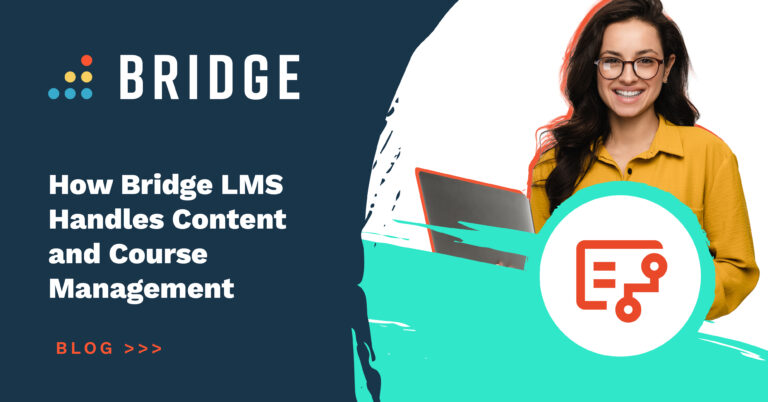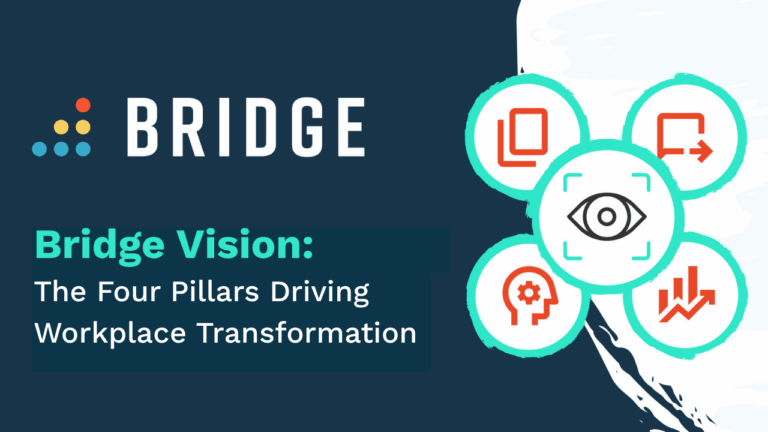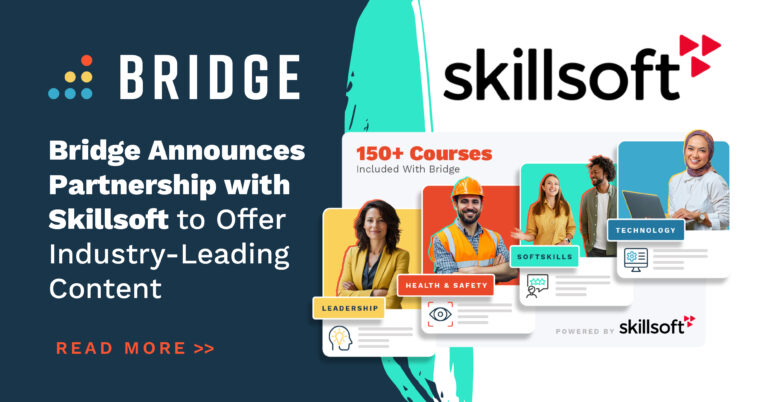With 2025 right around the corner, L&D professionals like you are getting their training programs and learning platforms ready. You know that a poorly planned program can have disastrous effects on your business—it can lead to compliance failures or workplace accidents, for example. Well-planned courses, on the other hand, can improve your company culture and boost retention by up to 57%.
When the stakes are this high, it can be hard to know where to start planning. Don’t worry—we got you covered! Read on for five key tasks to check off your list before the new year and you’ll be well on your way to an inspiring, educational 2025.
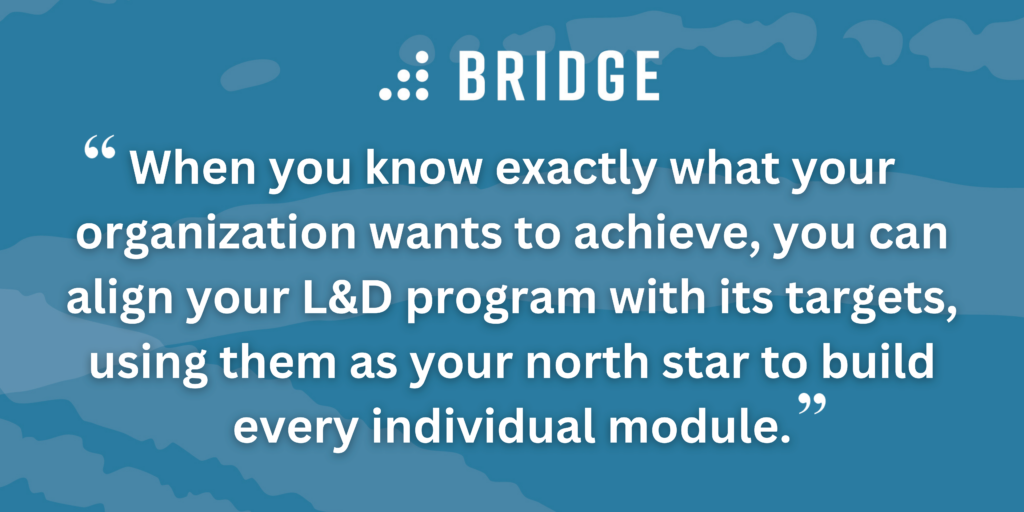
1) Align L&D Goals With Business Targets
The ultimate goal of your training program must be to drive your organization's overarching strategy forward. The key to success is fully understanding that strategy. When you know exactly what your organization wants to achieve, you can align your L&D program with its targets, using them as your north star to build every individual module.
This is why checking in with your key stakeholders is a great first step. Start having conversations well in advance of designing your program. This gives stakeholders peace of mind that they’ll have enough time to give feedback on your plans. It also assures them that you have your organization's best interests at heart.
Have an open and thorough discussion with your stakeholders. What business goals are top of mind for them? Are they worried about anything specific that L&D can address?
You don't necessarily need to rush in to propose solutions to their concerns at this stage. Assuring them that you’ll seek out their input as planning progresses can go a long way. Your main goal should be to make sure you have all the information you need to get a complete view of your organization's overall strategy. This way, you can craft a custom plan that will steadily drive business targets forward.
MORE FROM THE BRIDGE BLOG | ‘What You Need to Include in Your L&D Budget’
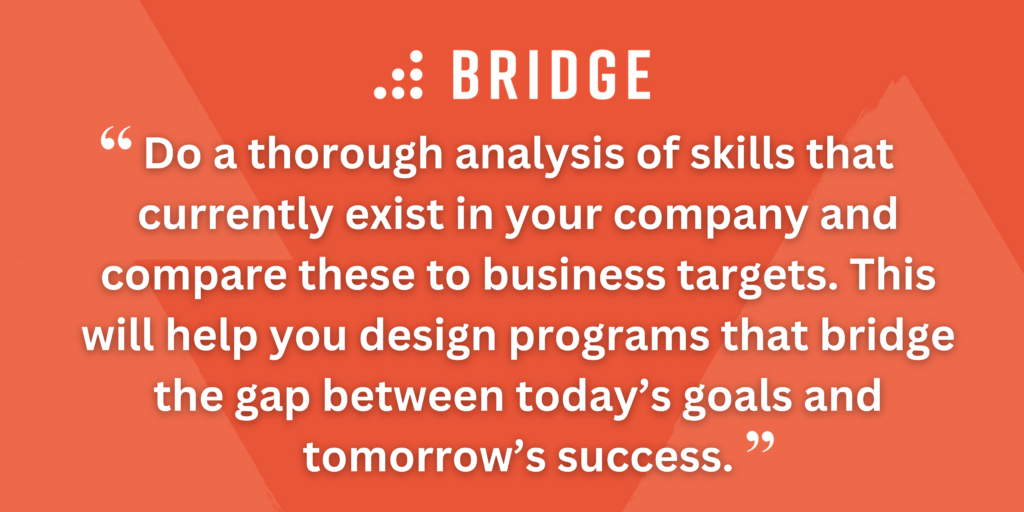
2) Analyze Your Organization’s Training Needs
Once you understand business targets, start looking into training needs for the upcoming year. Do a thorough analysis of skills that currently exist in your company and compare these to expectations your business has for the future. This will help you identify missing skills, so you can design programs that bridge the gap between today’s goals and tomorrow’s successes.
Training needs analysis can be quite intensive—it’s a good idea to give yourself around three to six months for this stage. If you haven’t started yet, you may want to allow yourself enough time, rather than dialing the pressure up to kick new initiatives off come January. If you don't thoroughly understand training needs, you won't be able to offer learners useful content or prove ROI to your key stakeholders.
Don't start your analysis too far in advance, though. Anything longer than 12 months can be counterproductive—most organizations will have changed too much during this timeframe. You don’t want to base your analysis on out-of-date information!
Looking at data across your business and the market to analyze your training needs isn’t easy. The good news is that the right technology can really take the pressure off. Bridge LMS is a unified skills management, eLearning, and performance platform that can give you a clear picture of your training needs. Our massive database of over 30,000 job titles and corresponding skills makes it easy to see how you should help learners improve.
READ MORE ON TRAINING NEEDS ANALYSIS | ‘How to Conduct a Skills Gap Analysis (And Why a Software-Based Approach Is Best)’
3) Take the Time to Understand the Learner’s Perspective
Once you've conducted your analysis, take some time to understand your learners’ needs before jumping straight into content creation. It’s important to meet your learners where they are. This can be more effective than trying to strongarm them into participating.
Even the best L&D program in the world won't add any value if learners can’t find the time to invest in it. Communicate outside of your department to evaluate scheduling needs around the business. This is especially important if you plan to include any live training events, or if you’re delivering modules that can take a long time to complete.
Also consider the cognitive load associated with taking an employee away from their day-to-day activities. Employees tend to prioritize their regular tasks and your training program may slip to the bottom of their to-do list. Get manager buy-in and work with them to set time aside for learning before you launch a new program. Start talking to managers to let reports know to expect L&D activities. When employees have advance notice, they're empowered to take control of their schedules and prioritize training.
This is another area where choosing the right LMS can make a big difference. Bridge is a great option for manager empowerment. The Development Plan feature lets managers and reports set goals and align these with courses and tasks in a few clicks. With solutions like these, managers can start the conversation on employee development early and help reports feel that the organization is invested in their career growth.
HANDPICKED FOR YOU | ‘How to Create a Culture of Continuous Feedback’
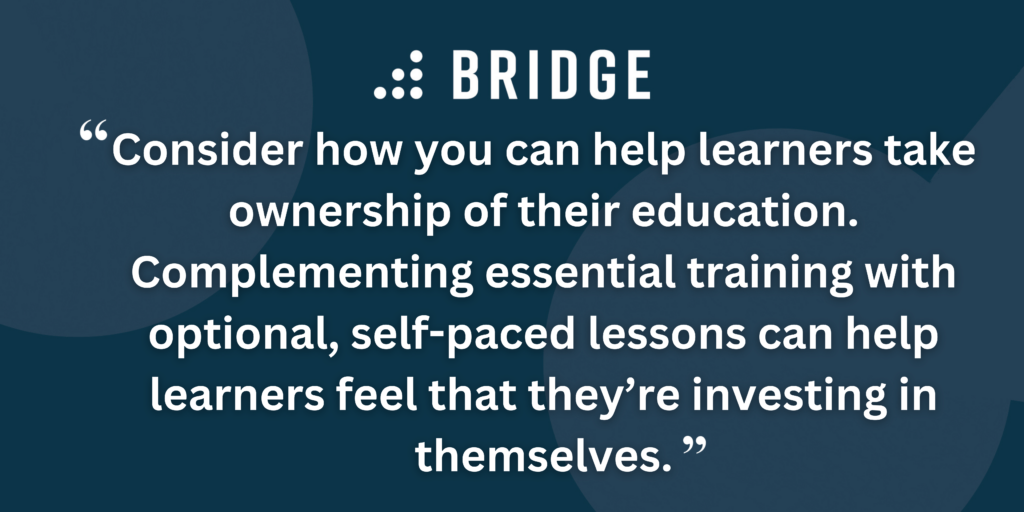
4) Get Your Learning Content Ready for the New Year
If you have a thorough understanding of your organization’s goals, training needs, and learner perspectives, you can start getting your content ready. Depending on the size of your organization, content development can take two to three months, so it's a good idea to speak with key stakeholders about their expectations for delivery dates.
As you update or create new content, keep the diversity of learners’ needs in mind. Strive for a good balance between reading resources, interactive digital elements, media like webinars and podcasts, and live facilitator-led events.
You’ll also want to consider how you can help learners take ownership of their education. Complementing essential training with optional, self-paced lessons can help learners feel that they’re investing in themselves, rather than being forced to complete cookie-cutter training.
Bridge makes it easy for you to steer clear of stale, one-size-fits-all content. Our authoring tool solutions make course design simple and intuitive. Bridge can also help you get into the habit of continuously collecting feedback on your content. You can track employee engagement and see how learners rate their knowledge or confidence after they complete a module. It’s easy to add custom questions like ‘What do you want more of?’ too, empowering you to collect the insights you need to keep improving courses, year after year.
DISCOVER MORE | ‘What Is a Content Authoring Tool And How to Choose One’
5) Write Your Communication and Enrollment Plan
You're not done yet! Planning to create some hype around your training program is a must-do.
Around one to two months before launching your training program, you’ll want to start sending out teaser comms to let learners know that a great L&D initiative is just around the corner. Not only will you get people excited, you'll also prompt them to start looking at their schedules. Putting placeholder dates in your early comms can increase participation, especially if there are going to be live sessions or opening days. Map out the dates for any big-ticket items now, and make a note to yourself on when you’ll send comms out to the organization.
You'll also need to plan for enrollment. About two weeks before launching any program, you’ll want to provide learners with a walkthrough of the platform they’ll be using. If you're onboarding a significant number of learners onto a new LMS, you may want to extend that to four weeks to get ahead of any hiccups.
If you're working with Bridge, you can rest assured that our customer service team will be on hand to help with any tech niggles. With round-the-clock support, seven days a week, every day of the year, we'll never leave you hanging.
Want Expert Support for a Great Year of L&D in 2025?
We'd love to talk about how we can help you create your best training program yet. Book a demo with us below, or take a self-guided tour to see what Bridge can do for you.
